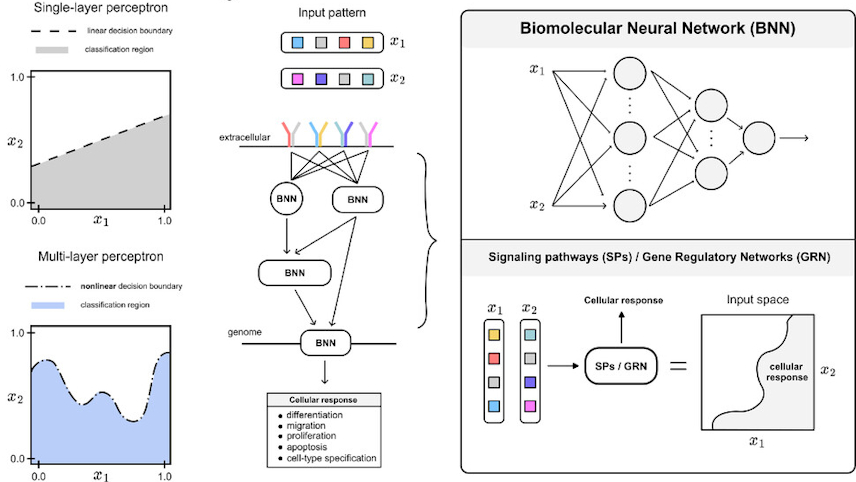We are excited to announce that the winner of the 2024 competition is Frank Britto Bisso and colleagues for their article Pattern recognition in living cells through the lens of machine learning

Tell us a little about yourself and your co-authors. What are your main research interests, and how did they lead you to write this Open Questions article?
We are part of the Cuba Samaniego Laboratory at Carnegie Mellon University, where we design genetic circuits that enable cells to sense, compute, and respond to their environment in new ways. One of our main goals is to bring ideas from machine learning into synthetic biology, including concepts such as optimization, learning, and building neural networks that already run inside living cells. This kind of work only happens through collaboration, and our team reflects that. Durga Shree focuses on machine learning, Rodrigo Aguilar on systems biology, Yinan Zhu, Mijael Espinoza, and Benjamin Díaz on biotechnology, and I bring a background in computational biology. Under the guidance of Prof. Christian Cuba Samaniego, we came together to revisit the question: how do single cells make decisions?
I am a first-year PhD student in the Joint Carnegie Mellon and University of Pittsburgh Computational Biology (CPCB) program. The idea for this article started during one of my first brainstorming sessions with Prof. Cuba Samaniego while exploring potential thesis topics. We were comparing the complexity of computation in modern deep learning models with the kind of computations that happen inside single cells. Cells are able to differentiate, adapt, and respond to their environment in a coordinated way, which suggests that a similar level of computational complexity might already exist in biology, despite cells having far fewer components than large artificial networks, since their genomes have a fixed size. Later, during a lab meeting where we discussed the structure of gene regulatory networks after reading the foundational paper “On schemes of combinatorial transcription logic,” we refined this idea further. We noticed that genes are regulated through hierarchical, interconnected networks that resemble the layered structure of artificial neural networks, leading us to wonder whether the same computational principles might apply at the molecular level. This connection between biology and computation felt new and underexplored, which made the Open Questions collection the perfect place to share it.

Frank Britto Bisso, PhD Student at Carnegie Mellon University. Photo credit: F Britto Bisso.
What did you enjoy most about contributing to the Open Questions collection, and do you recommend that other early career researchers enter this year’s competition?
The Open Questions collection gives researchers a space to propose new ideas and highlight unresolved problems in their fields. We found that process incredibly valuable because it not only inspired future directions - it definitely inspired ours! - but also sparked conversations that led to new hypotheses we are now testing in the lab. In our case, discussions within the research community led us to explore the principles behind computation at the molecular scale and to start building synthetic networks that challenge the most complex neural circuits we can create inside living cells. We would definitely encourage early career researchers to take part. Sharing an open question often attracts perspectives you might not expect, and that overlap between disciplines is where the most exciting ideas tend to emerge.

Figure 1. Pattern recognition in living cells. Credit: doi/10.1098/rsob.240377
The 2025 competition is now open and will run until 6 January 2026. Please see our terms and conditions before entering or contact the editorial office with your questions.
The competition saw fantastic entries for the 2024 prize. You can see all of these excellent published entries on this special collection page.



